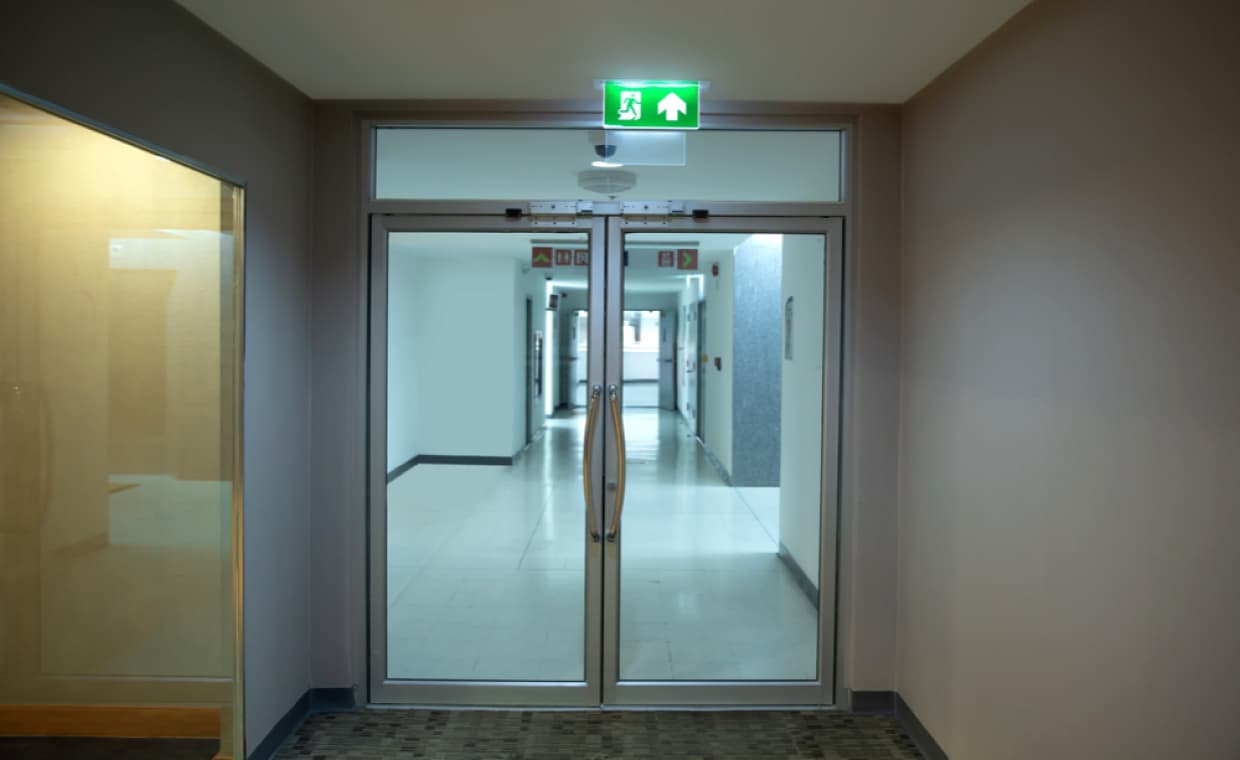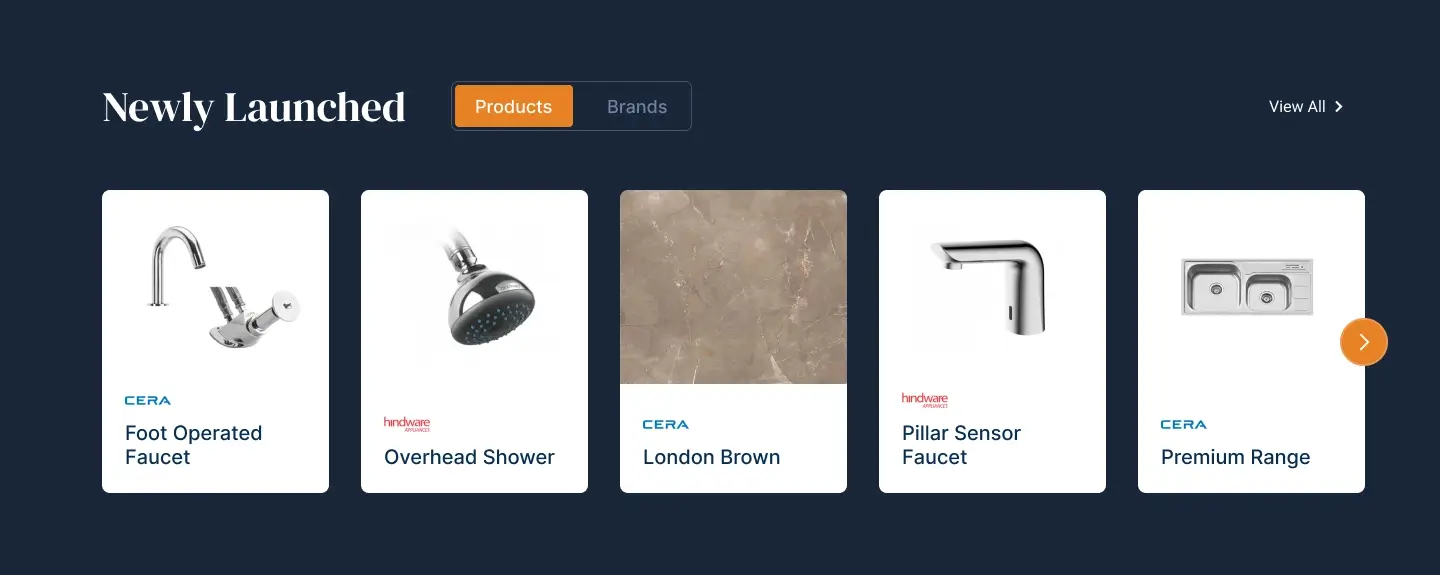
Table of Contents
Quick Overview
Here is the quick overview on modern fire rated glass doors:
- Due to modern advancement of materials, engineering, and fire rated glass have made fire glass both visually appealing and protective.
- Fire rated glass doors available in variety of materials and finishes such as timber veneer, brushed steel, powder-coated metal, or painted surfaces to match different design themes.
- Modern fire rated glass panels allow natural light, openness in space and give full fire protection.
- It comes with different hidden fittings like slim frames, concealed closers, flush handles which gives seamless look.
- Modern fire glass doors come with customization options by giving different colours, textures, patterns, and decorative glazing allow doors to complement unique design identities.
For decades, fire doors were viewed as purely functional safety barriers. They were bulky, industrial-looking, and often disrupted the flow of interiors. Fire rated glass doors typically made of plain metal sheets with heavy frames and basic finishes. They prioritized protection over design, leaving little consideration for how they fit into the architectural vision of a space. While effective in safeguarding lives during emergencies, these older fire doors stood out awkwardly, clashing with the aesthetics of offices, hotels, and residential buildings.
Today, that perception has completely changed. Thanks to advancements in materials, engineering, and glass technology, modern fire rated doors and fire rated glass doors have become design-friendly solutions. They are no longer limited to dull or purely functional styles. Instead, they now integrate seamlessly into contemporary architecture, offering both reliable protection and visual harmony. These innovations have elevated fire doors from regulatory necessities to stylish safety features that architects, designers, and homeowners embrace.
Stylish Materials and Finishes

One of the biggest breakthroughs in fire door design is the diversity of finishes available. Unlike the plain, industrial designs of the past, today’s fire doors and fire rated glass doors can be tailored to reflect the character of the space they occupy. Veneered timber, brushed steel, powder-coated metals, and even high-quality painted surfaces are now widely available.
This variety allows architects to specify fire doors that enhance interiors rather than disrupt them. A modern office might choose a sleek metallic finish, while a boutique hotel could opt for natural wood tones to create a warm, inviting atmosphere. In upscale residential projects, fire rated glass doors can be matched with minimalist frames, ensuring that protection blends perfectly with décor.
Bringing in Light with Fire Rated Glass

One of the most significant innovations has been the use of fire-resistant glazing. Traditionally, designers avoided glass in fire doors because of safety limitations. However, advanced fire rated glass technology has made it possible to incorporate large glazed sections into both standard fire doors and dedicated fire rated glass doors.
These doors allow natural light to flow into interiors, brighten dark corridors, and create a more open atmosphere. This is particularly valuable in office spaces, hotel lobbies, and modern homes where openness and transparency are highly valued. Importantly, the fire rated glass provides the same protection as solid panels, resisting flames, heat, and smoke for the required duration. This combination of light, safety, and style has revolutionized how fire doors are perceived.
Clean Look with Hidden Fittings

Another innovation in modern fire doors is the refinement of hardware and fittings. Older fire doors often featured bulky closers, hinges, and handles that disrupted sleek interiors. Now, fire rated glass doors and solid fire doors are designed with slim frames, concealed closers, and flush handles.
These discreet elements make it possible for doors to merge almost invisibly with surrounding walls or partitions. In luxury homes, corporate offices, or hospitality spaces, the result is a clean, uncluttered look that meets the highest safety standards without compromising design intent.
Custom Fire Rated Glass Doors Designs to Match Every Project

Modern fire doors are no longer “one-size-fits-all.” They can be customized with colours, finishes, patterns, and even branding. Fire rated glass doors can be enhanced with decorative glazing, frosted effects, or etched patterns to suit specific themes.
This flexibility ensures that fire doors do more than meet regulations. They contribute to the overall design narrative of a building, becoming part of its identity while still guaranteeing fire safety.
Safe Doesn’t Mean Boring
The evolution of fire doors demonstrates that safety and aesthetics can work hand in hand. Innovative materials, fire rated glazing, discreet fittings, and customizable options have transformed these essential elements into architectural assets.
Whether it is a luxury hotel, a contemporary office, or a modern home, today’s fire doors and fire rated glass doors enhance interiors while providing life-saving protection during emergencies. Safety should never come at the cost of style, and with solutions from manufacturers like Vetrotech, it no longer has to.
Also Read: Industry Expert Ideas to Cover Fireplace Opening
FAQs on Fire Rated Glass Doors
1. What is the Purpose of Fire Rated Glass Doors?
Fire rated glass doors help in to control fire in specific areas, preserving escape routes, reducing and property damage and supporting building compartmentation strategies and legal requirements.
2. How Fire Glass Doors Work?
Intumescent strips expand upon heating, sealing the door against fire and smoke. The doors must remain closed or use self-closing mechanisms to perform properly during a fire.
3. How to do Fire Door Maintenance?
Fire rated glass doors must be properly certified, regular inspected, maintained and should not modified after installation except by the manufacturer.
4. Are Fire Rated Glass Doors a Legal Requirement?
Yes, the placement and specification must comply with local building regulations and fire safety laws.






























